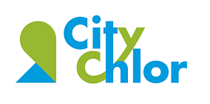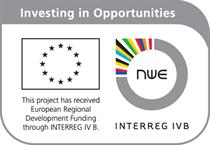Characterisation techniques
In urban areas, pollution not only poses a direct risk through exposure to contaminants, it also indirectly restrains economic and urban development and harms the quality of life due to the slow processes of site investigation and remediation. Therefore, as part of the integrated approach, CityChlor investigated several innovative techniques that have a positive impact on social economics: more cost efficient, faster and less inconvenient for the neighbours than traditional techniques.
A first step in the remediation process is the correct and complete characterisation of pollution. The source zones must be detected, the pollution plume must be delineated and the possible effects of the pollution on the environment (human health, groundwater, ecology) must be evaluated by means of risk models in order to define the necessity and the urgency of remediation. As the complete removal of chlorinated solvents from soil or groundwater is virtually impossible, remediation will be risk-based, meaning that the goal of remediation will be to remove the risks. Risk models are used to define the acceptable levels of residual pollution and thus the goals of the remediation.
An urban environment poses additional requirements to the tools for characterisation. The classic technique of drilling to detect pollution poses problems due to the presence of buildings and underground infrastructure. Risk models must take into account the risks related to inhalation of indoor air affected by evaporation of pollution. There is a need for cost-effective, reliable and fast tools for characterisation of pollution, tools for measurements as well as models for risk evaluation.
Documents
- Groundwater, soil, soil gas and indoor air characterization - Technical book (1014 kB) (pdf, 1 MB)
- Groundwater quality measurement with passive samplers - Code of best practices (1550 kB) (pdf, 1.5 MB)
- Direct-Push Technology (2961 kB) (pdf, 2.9 MB)
- Long Term Monitoring Optimization (LTMO) - Concepts and tools (2647 kB) (pdf, 2.6 MB)
- Soil-gas monitoring: soil-gas well designs and soil-gas sampling techniques (2684 kB) (pdf, 2.6 MB)
- Attenuation of the vinyl chloride in the vadose zone (1163 kB) (pdf, 1.1 MB)
- Characterisation of indoor air quality in relation to potential soil pollution by volatile and semi-volatile chemicals (2555 kB) (pdf, 2.5 MB)
- Models for predicting transfers to indoor air (1268 kB) (pdf, 1.2 MB)
- Policy framework and human health risk assessment tools (1361 kB) (pdf, 1.3 MB)
- Area oriented investigation approach for groundwater management, March 28 2013 (1366 kB) (pdf, 1.3 MB)
- CityChlor Pilootonderzoek NAPL FLUTe sampler Spinnerijkaai Kortrijk (2716 kB) (pdf, 2.7 MB)
- CityChlor Pilootonderzoek EnISSA MIP Spinnerijkaai Kortrijk (3938 kB) (pdf, 3.8 MB)

